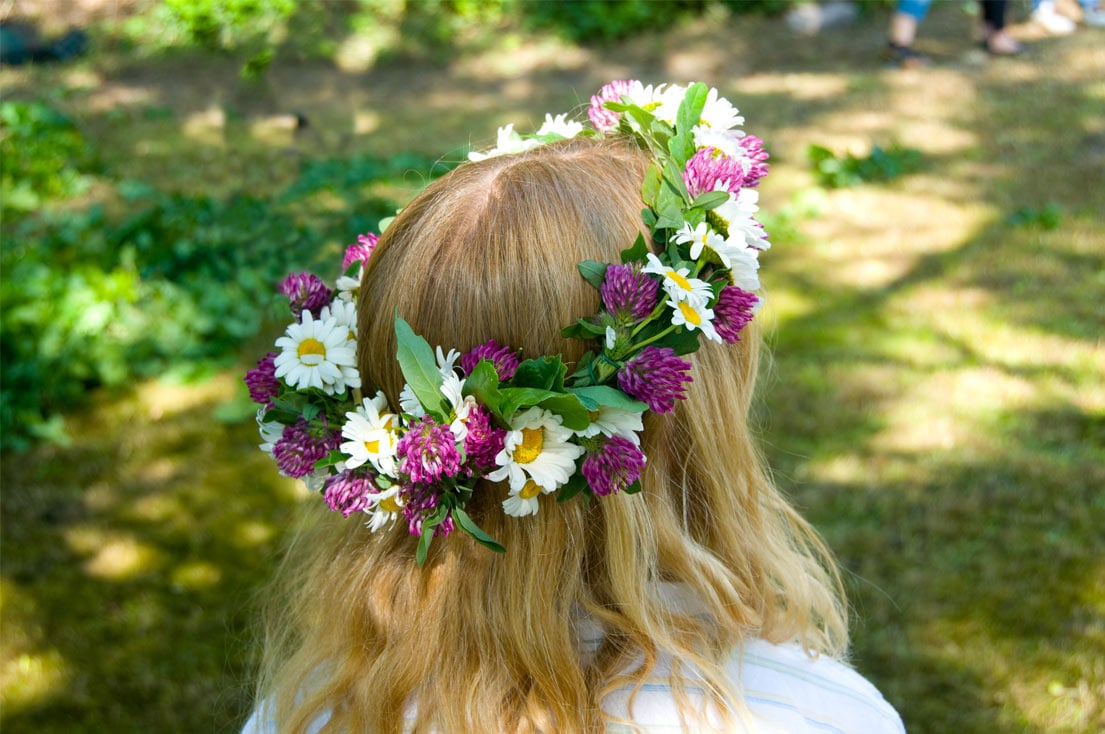
Midsummer is known as the time in the middle of the summer, often celebrated on or close to the summer solstice – the longest day of the year. Traditionally, Midsummer is on June 24th and is quite popular in the Nordic nations.
The celebration of Midsummer dates to pagan times. It started during the Stone Age as a ritual for a fruitful harvest and for fertility. The main theme of the celebration was honoring nature by dancing around maypoles, picking herbs to fend off evil spirits, and having bonfires. Since then, Midsummer has had a couple different names and versions. In the 4th and 5th centuries, it was known as St. John’s Day to fit into Christian beliefs and known as Litha in Germany. People still celebrate Midsummer today in different capacities depending on location. Let’s take a look!
Midsummer in Sweden is an official holiday and is known there as Midsommar. Many Swedes celebrate the holiday in the countryside by wearing flower crowns, dancing around maypoles, and enjoying a picnic of Swedish delicacies. If you celebrate in Sweden, you’ll want to say: “Glad Midsommar!”
Folks in Finland celebrate similarly, however they call it Johannus after St. John. Many Finns spend the weekend relaxing in a sauna in their summer homes or lighting large bonfires. There is a belief that “the louder a Finn got when marking the Midsummer, the better luck they would have in the year ahead.” Don’t forget to say “Hyvää Juhannusta!” if you celebrate in Finland.
Midsummer traditions in Norway and Denmark are quite similar. Both involve large bonfires and enjoying the outdoors. It is known as Sankthansaften in both places, though it’s also known as Jonsok in Norway. In Northern Norway, you could also honor the holiday by experiencing the midnight sun. If you celebrate in Norway, wish others a “God Sankthansaften!”
Lastly, celebrations in Iceland look a little different from the rest. It is called Jónsmessa, “Mass of John the Baptist,” and is more superstitiously celebrated than anything. According to nordicvisitor.com, “It is said that cows are able to speak, seals become human, and elves may interact with you on Jónsmessa.”
Regardless of how Midsummer is celebrated, the main themes of the day are important reminders. It allows us to take a moment to show appreciation towards nature and reminds us to be kind and generous to all.
